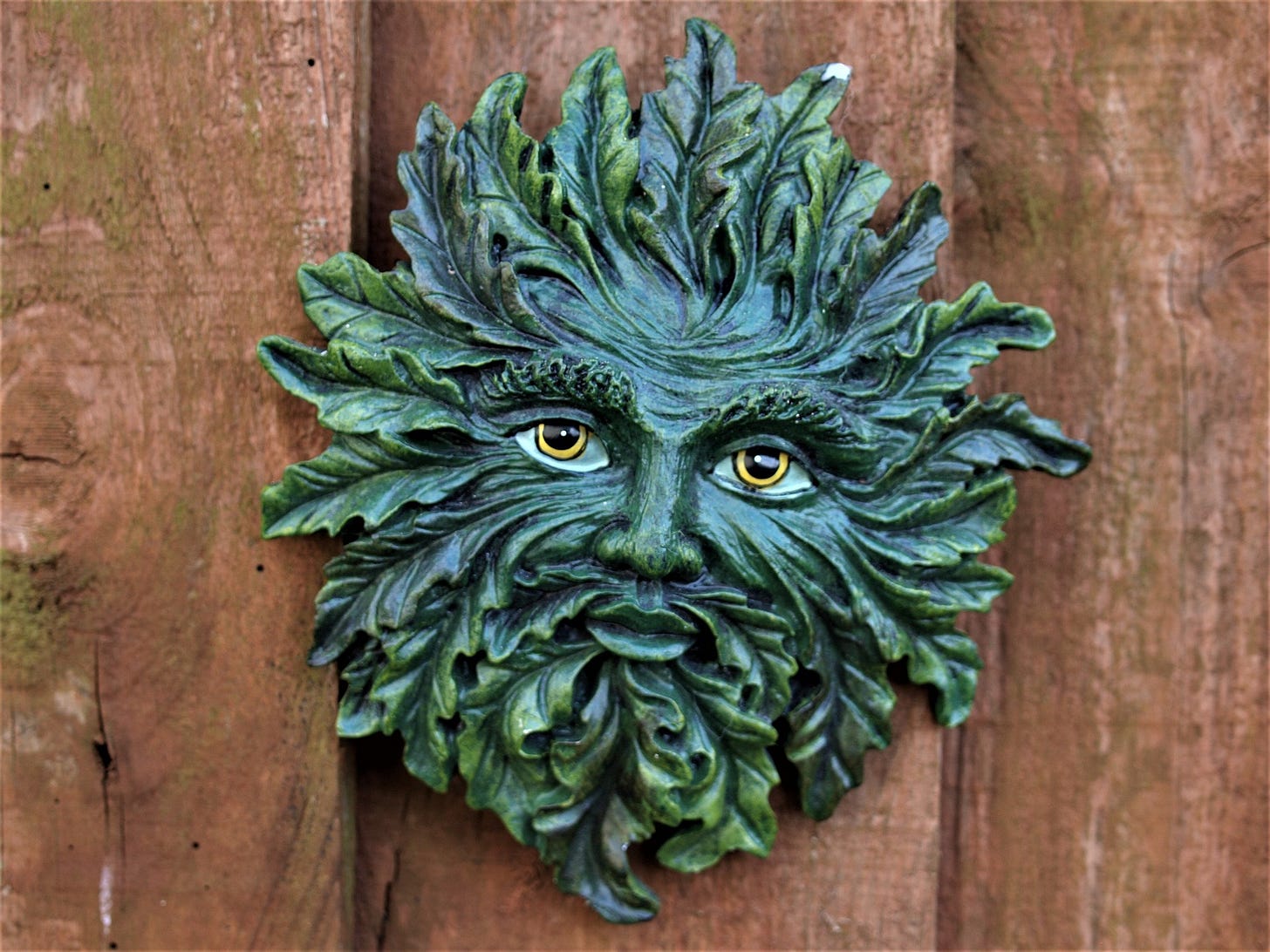Another adventure and another piece of free range folklore. These foliate heads were on the beams of a building I was in for a site visit recently and when I asked the staff who worked there where they had come from, no-one could be sure. A carpentry project perhaps? Someone’s collection? Either way they were donated to the site at some point and here they are!
There were a couple that I didn’t manage to photograph but I hope you’ll enjoy looking through the one’s that I did. My personal favourite is the last one. They’ve each got such character.
The Green Man or foliate head, as it is often referred to, is thought to be a fertility symbol, particularly prevalent in the spring. It represents the cycle of growth, the great greening and the arrival of plenty.
It is often found as a carving in churches above doorways or on the end of pews. He wasn’t called the Green Man until the late 1930s when Lady Raglan referred to him this way in an article she wrote in the Folklore Journal. In this article she states that these ‘Green Men’ are present in churches in at least 23 English counties.
Jack in the Green, as he is also known, can appear in a number of forms. He may have a beard, roots growing from his mouth, or be adorned with oak leaves or ivy. The one thing they all have in common though is one way or another they are faces that appear from dense foliage.
In conclusion (and a very brief one at that) the foliate head is a symbol of prosperity, the good and plenty that is to come in the spring. Whatever his original intention he has become a nature god of the people and he often appears in my stories as a man who helps the hero on their way, leading them to riches or teaching them lessons about nature and the landscape. He also appears in one of my original stories in ‘Adventures In Nature’.
There is plenty more out there about the Green Man and I’m sure you know your own stories of him. I hope you’ve enjoyed seeing him in the wild and if you would like you can read Lady Raglan’s article all about him here.
This is a free post for all subscribers. For an archive of posts and an extra does of wild stories to you inbox in the form of Kitchen Witching, spoken word poetry, Notes From The Downs and lost stories, please consider upgrading to a paid subscription of just £5 a month.






Share this post